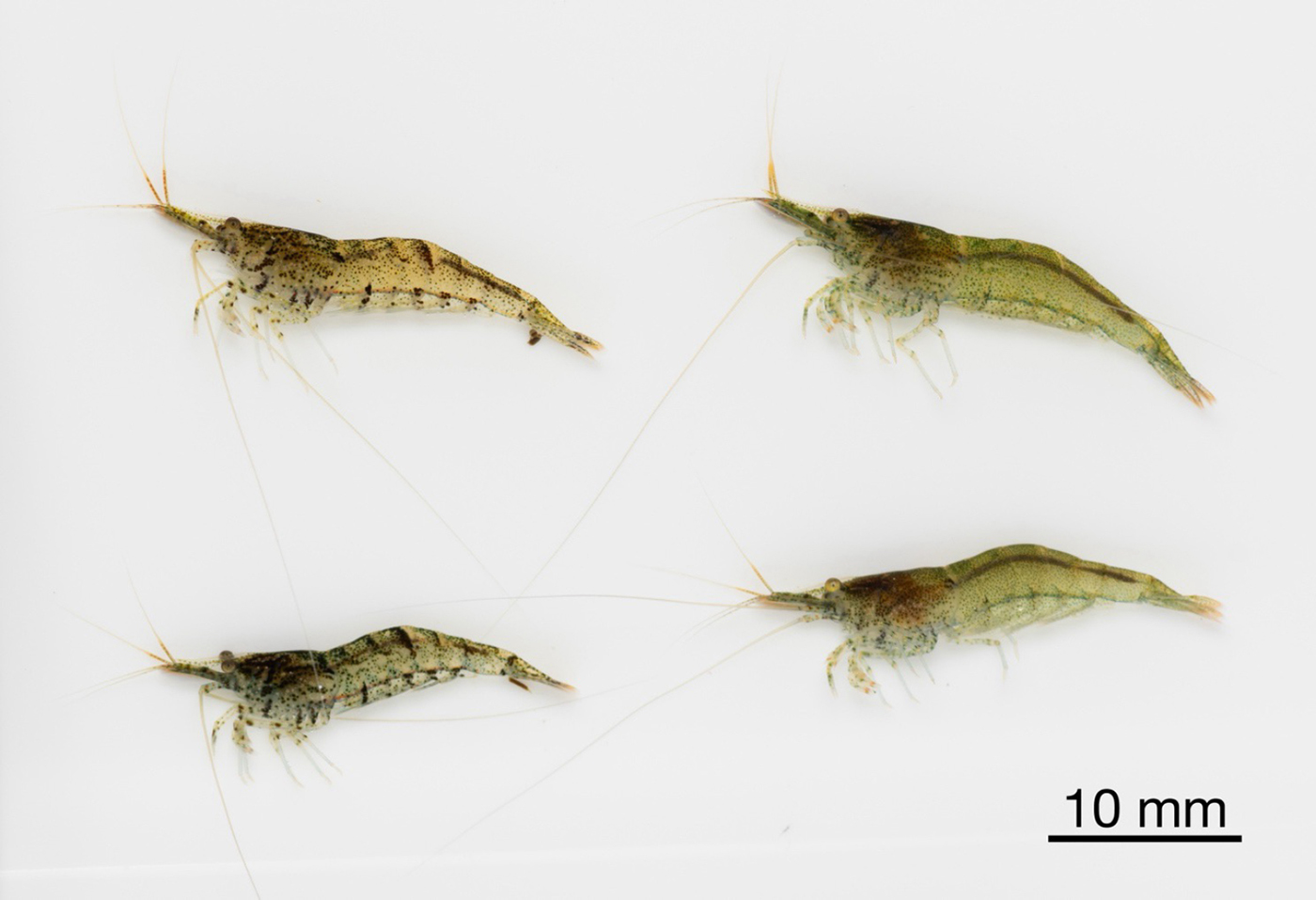Dam prevents the invasion of non-native freshwater shrimp into native habitats
Kitano Group / Ecological Genetics Laboratory
River dam prevents the invasion of non-native species of Neocaridina Kubo, 1938 (Decapoda: Caridea: Atyidae) into native habitats: A case study in the Yumesaki River system, Japan
Ryosuke Ishii and Yusuke Fuke *
* Corresponding author
Journal of Crustacean Biology (2025) 45, ruaf009 DOI:10.1093/jcbiol/ruaf009
The range expansion of invasive species that threaten biodiversity is caused by repeated cycles of their artificial introduction and subsequent dispersal. Dispersal can occur without human intervention, and its pattern is mainly determined by environmental factors and species characteristics.
In this study, Yusuke Fuke, JSPS postdoctoral fellow at the National Institute of Genetics, and Ryosuke Ishii, master’s student at Graduate School of Agriculture, Kagawa University, focused on the freshwater shrimp community in the Yumesaki River system, Japan, which is the habitat of the native species Neocaridina denticulata and has experienced the introduction of the closely related non-native species N. davidi. They examined the genetic population structures and morphological characteristics of these species to elucidate their dispersal process. Their results showed that populations comprising only the native species remained upstream of the dam, whereas the native species was replaced by the non-native species at the other sites. These results demonstrate that the distribution of non-native species can expand throughout the entire river system in rivers without structures that restrict the movement of aquatic organisms.

Figure: Native freshwater shrimp Neocaridina denticulata, found only upstream of the dam in the water system studied in this study.















